
If you’re on the outside of Toronto looking in, you’re aware they have their “core four” up front. This is the case by any metric, perhaps the most telling being “salary.” Alex Kerfoot is the fifth-highest paid forward, yet if you doubled his salary he’d only earn about what William Nylander makes per season. It’s the case by stats and by perception. It’s the reality.
But if you’re in Toronto, you likely see a divide in the perception of the names within that core four that doesn’t have to do with salary. Auston Matthews and Mitch Marner are top-five draft picks who just finished top-five in league scoring last season and play two more minutes per game than the other two.
But two players alone aren’t enough to have success in this league (plenty of teams have tried). John Tavares and Nylander have been a huge part of why the Leafs have lived up to, and exceeded, expectations so far this season.
I picked through some Sportlogiq leaderboards to highlight some of the unique lists where these two stars find their names.
Let’s start with expected goals. Do not be afraid of this concept, which can crudely be understood as shot attempts but with quality considered. If an attempt is from the slot or off a rebound or rush, we’re more likely to expect it to go in, right? That’s all this stat is. Guys who have a high number of expected goals, shockingly, tend to have a lot of actual goals. Here is the leaderboard from the league at large:
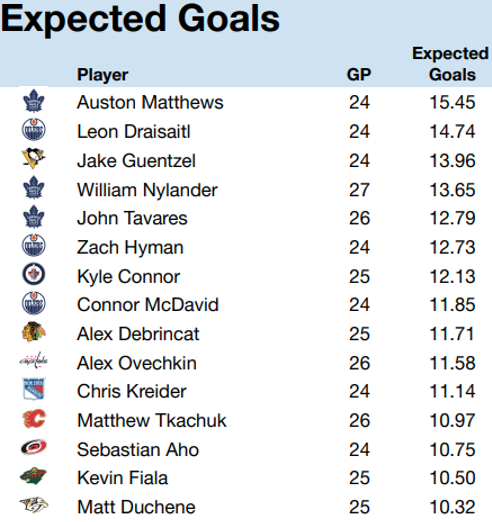
Keep in mind Alex Ovechkin is only where he is because we don’t expect shots to go in from the distance and area he’s often shooting from. He’s just an absurd shooter.
You’re probably not shocked to see Matthews at the top, nor Draisaitl right below him. Jake Guentzel has a cool seven goals in his past four games (before his latest injury), and has done nothing but score in his career. But there you have Nylander and Tavares rounding out the NHL’s top five as guys who get good looks in dangerous situations.
Now, it may be wise not to trust any stat that has Zach Hyman ahead of Connor McDavid, but this is largely a product of where Hyman takes his shots from, and “expected goals” doesn’t care about the quality of finisher a guy is. In that regard, Hyman ain’t McDavid.
You don’t get on the expected goals leaderboard without getting shots from the slot, and so you won’t be surprised to see those same three Leafs names show up below:
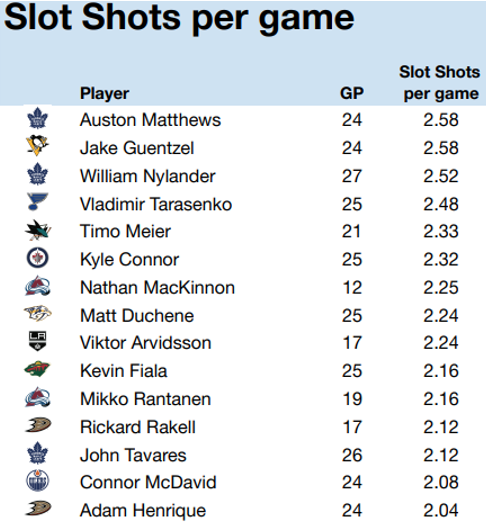
“The slot” as the statistical definition goes is a generous area around and directly in front of the net, out to the hashmarks. Matthews and Nylander find soft spots and get looks to use their dangerous shots, while Tavares is far more likely to get his looks from within spitting distance of the blue paint. And to that effect, let’s dial this in to the “inner slot” which is basically a rectangle well below the hashmarks directly on top of the crease.
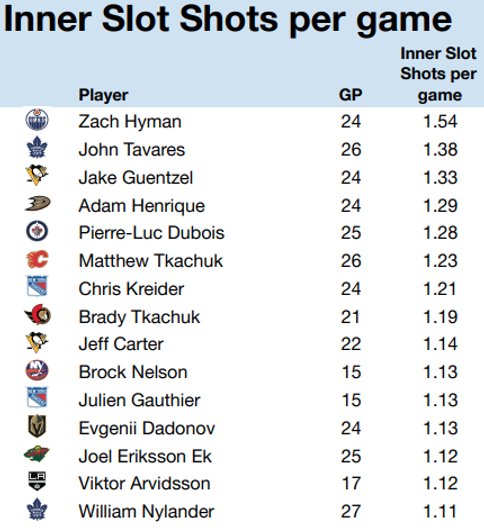
That Nylander shows up inside the top 15 here is the mark of a career evolution. I’d love to know how many inner slot shots per game he got his rookie year. Still, this isn’t solely him mucking and grinding (a breakaway results in an inner slot shot, too), but seriously, look at the names on the above list and tell me it doesn’t tell you a story about where players get shots from. That right there my friends shows a certain type of player who’s getting looks from those areas. And Nylander!
I did mention that “a breakaway results in an inner slot shot, too” and I think that’s at least partially relevant for Nylander, who’s a top-10 NHL player in “rush chances per game” this season. Here’s the rare list where Tavares (rather unsurprisingly) doesn’t show up.

That category to me looks like a mash-up of pure burners (Josh Anderson and Roope Hintz), players who take risks to get offence (Nylander and Johnny Gaudreau), and combinations of the two (McDavid and Nikolaj Ehlers).
Once it gets off the rush and in the zone though, Nylander’s still not too shabby. I’m not at all surprised to see that Tavares shows back up on another list of league leaders in this category.
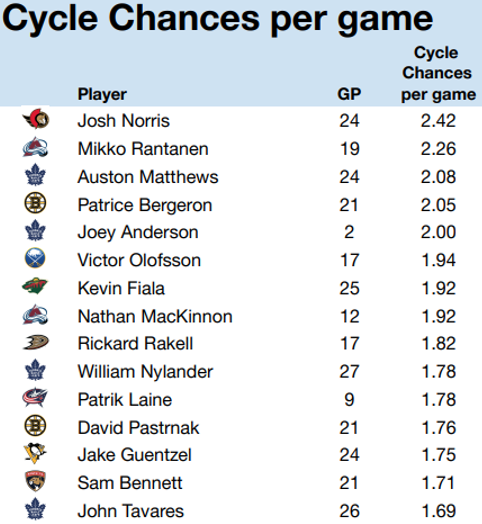
(If you haven’t noticed by now, Matthews is pretty good. Shout-out to Josh Norris here too, by the way.)
Nylander and Tavares are proven effective at not having meaningless O-zone time. When they get the puck down in the O-zone, they’re able to turn those minutes into chances. Tavares doesn’t actually hang on to the puck there much (34 seconds per game, to Nylander’s 46 seconds per), but he’s adept at instantly turning things dangerous. Needless to say, they aren’t on the below list, but it’s interesting to pick through anyway:
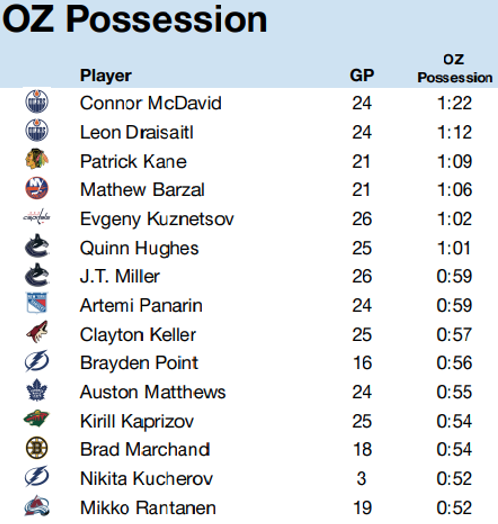
Through a combined 55 games, Tavares and Nylander have 55 points. They’re playing towards 19 minutes per game, they’re a part of the league’s fourth-best power play, and it’s all happening in a rather sustainable way, with no high percentages to make us believe they’re getting lucky. They’ve simply been really good.
Of course, Matthews and Marner are huge for the Leafs. Matthews shows up everywhere, as you surely noted above. He’s also the only Leaf on the “forecheck chances” board, which highlights how effective he is at getting under sticks and creating chances.
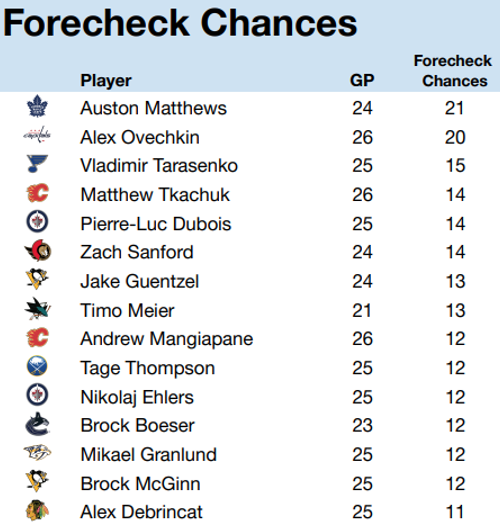
Meanwhile, Marner is more likely to show up on lists like the one below, where he’s among the league’s five best players at setting up teammates in the slot.
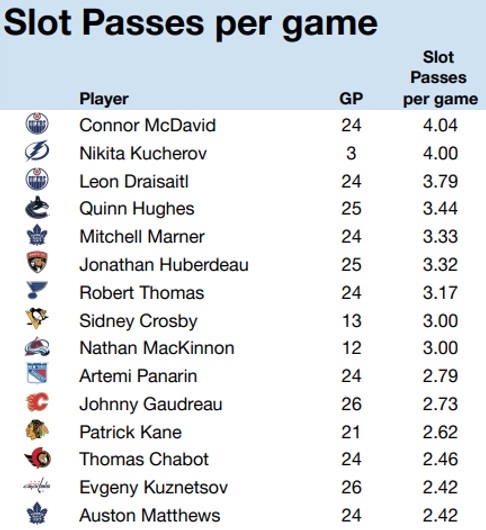
But as of Thursday the Leafs are tied for the league lead in points, and no two players can drive a team to that level of success. Tavares and Nylander have held up their end of the bargain, and with those valuable pieces of a solid core, the Leafs are thriving.
How Nylander, Tavares are thriving in Leafs’ ‘core four’ offensive plan
Source: Pinas Ko Mahal

0 Mga Komento